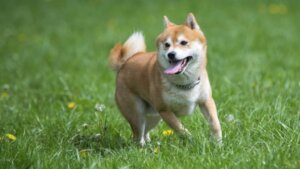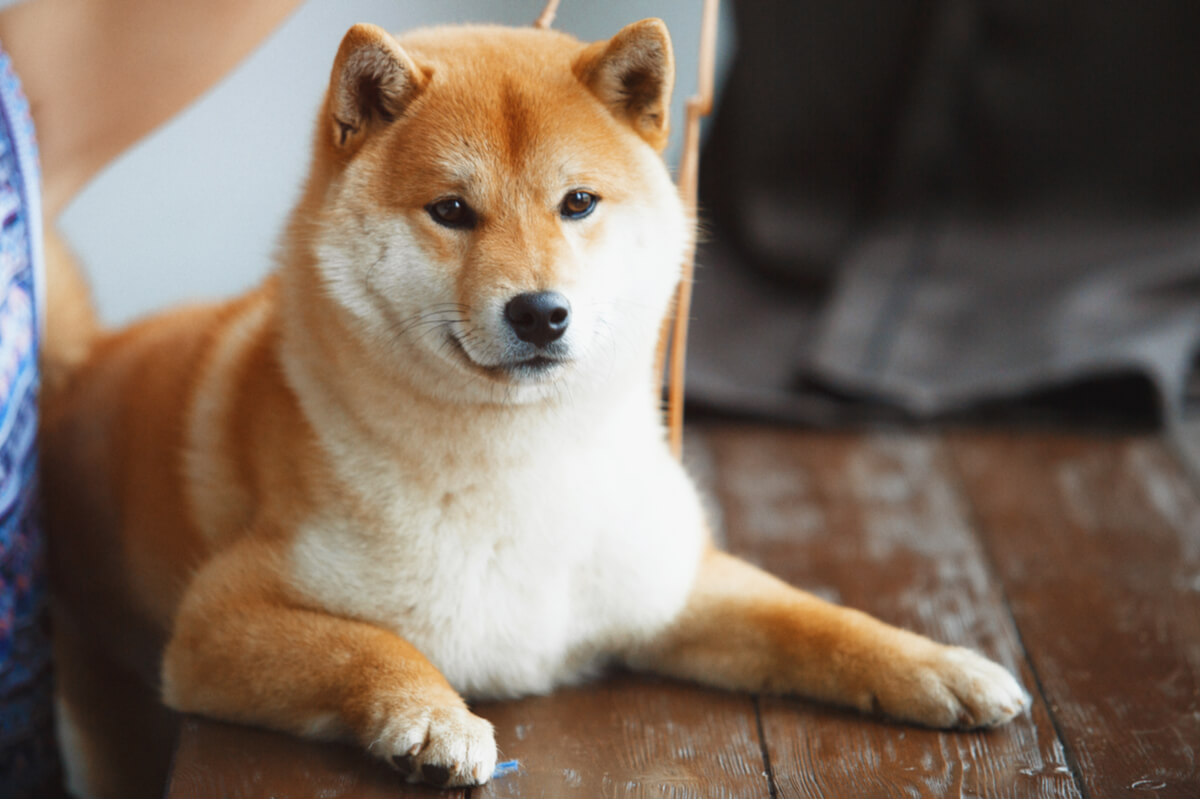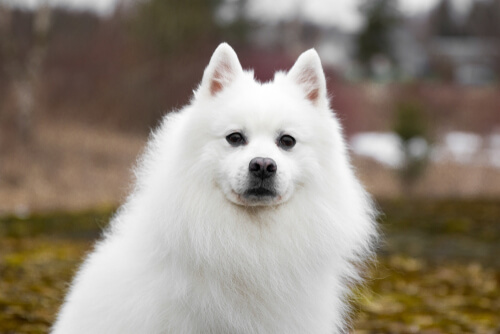7 Japanese Dog Breeds You Should Know About

Japanese dog breeds are among the most popular in the world. They’re dogs that were originally developed for hunting, with a great instinct that remains in today’s breeds. They vary in size and type of coat, as well as color, but what they all have in common is that they’re beautiful and faithful!
They usually bear the name inu, which means dog in Japanese. In this article, we’ll bring you 7 Japanese dog breeds – loyal and strong-willed companions that you’ll love!
Japanese dog breeds
Some Japanese dog breeds date back more than 3000 years. They’re very special, with physical or temperament characteristics that make them quite unique. Here’s our list, chosen especially for you.
1. Akita Inu
The Akita Inu is a very old breed, as well as being popular and quite large – up to 67 centimeters tall (2.2 feet) at the withers and weighing 30 to 45 kilos (66 to 100 pounds). It has small eyes, triangular-shaped ears, a muscular, strong body, and a very peculiar curled tail. In addition, its dense, soft, and bristly coat in tawny red, sesame, brindle, or white, completes its characteristics and makes it a beautiful specimen.
These dogs were first used to hunt bears, then as fighting dogs. Nowadays, they’re very energetic, but quite quiet, with a calm and manageable character.
The most important thing is that they’re very loyal to their owners. This was demonstrated in the famous and touching story of Hachiko, who waited for his master in a train station for almost 10 years after his death. Thanks to the story, a bronze statue was erected in his honor.
2. Shiba Inu
Another Japanese dog breed you should know about is the Shiba Inu. In appearance it resembles the Akita, but it’s a lot smaller (up to 40 centimeters, 1.3 feet). It has a muscular, strong body, with a dense coat, with a lovely red or fire red coloring, which makes it look sweet and charming.
They’re agile, lively, fast animals, with sharp senses, which were first used for hunting. These charming, energetic dogs are also known as “cat dogs” thanks to their independence, because they like to do things when they want! However, they’re affectionate and very loyal dogs; you just have to make it clear to them from the beginning who’s in charge!

3. Hokkaido Inu
Also known by the name of Ainu Ken, it’s used as a hunting dog and pet, and even used to hunt brown bears. As you can see, we’re dealing with a very strong breed, despite its medium size. The FCI has confirmed that the Hokkaido Inu males are very strong. The males can reach up to 51.5 centimeters (1.7 feet) and females 48.5 centimeters (1.6 feet) at the withers.
The Hokkaido is a very strong dog in every way, and its dense coat and robust body allow it to withstand the freezing cold and intense snowfalls. In addition, among its other characteristics are its bravery, nobility, fidelity, and activity. It’s also very intelligent – all in all, a really fascinating breed.
4. Tosa Inu
Another of our large Japanese dog breeds is the Tosa Inu. It’s a breed with a combative instinct, and is vigorous, and a very protective guard dog for the family. Males can reach at least 60 centimeters (2 feet) to the withers, and females 55 cm (1.8 feet).
It has a majestic air about it, thanks to its sturdy build, broad chest, straight back, and well-raised belly. It also has an air of nobility. In addition, it has hanging, triangular ears, a long, thin tail (at the base it’s thicker), and a short coat that makes it easy to care for.
5. Kai Ken
The Kai Ken breed is very popular in Japan, and it was even declared a breed of national heritage in 1934. Its distinctive character is its brindle coat and its long, shaggy, unkempt tail. It’s a very robust dog, with well-developed muscles and strong legs. It’s also very energetic. It’s of medium size – between 45 and 50 centimeters tall (1.5 to 1.8 feet) at the withers.
These dogs were used as hunting dogs, including wild boars. Their alert and lively temperament allows them to continue to perform their hunting functions, but they’re also excellent companion animals, affectionate, sociable, and protective.
6. Japanese Spitz
The Japanese Spitz is a beautiful white dog, which stands out for its thick coat. This extends to its tail, while on its face the hair is quite short. It has large eyes, a sharp muzzle and triangular and erect ears, which finish off its elegant, stylish appearance.
This dog falls into the category of small dogs, measuring only 30 to 38 centimeters (1 to 1.2) at the withers. Its robust body and lively character make it a wonderful, very intelligent, and loyal companion dog,

7. Japanese Spaniel
Also called the Japanese Chin, this is another breed of small dogs, measuring approximately 25 centimeters (10 inches). It has a long, smooth, and silky coat, which is white with black or red spots. With large eyes, wide and hanging ears, and a tail of long hairs. These characteristics give it a refined appearance. Moreover, it is an obedient, sweet, intelligent, and very captivating pet.
As you can see, Japanese dog breeds are charming, so having any of them at home would be a great choice. Although, of course, at the end of the day, all canines are adorable, regardless of their lineage or place of origin.
All cited sources were thoroughly reviewed by our team to ensure their quality, reliability, currency, and validity. The bibliography of this article was considered reliable and of academic or scientific accuracy.
- FCI-Standard N° 261. Hokkaido. Recuperado el 25 de abril de 2022, disponible en: http://www.fci.be/Nomenclature/Standards/261g05-en.pdf
- FCI-Standard N° 317. Kai. Recuperado el 25 de abril de 2022, disponible en: http://www.fci.be/Nomenclature/Standards/317g05-es.pdf
- FCI-Stanar N° 206. Spaniel japonés. Recuperado el 25 de abril de 2022, disponible en: http://www.fci.be/Nomenclature/Standards/206g09-es.pdf
- Fédération Cynologique Internationale (2021). Nomenclatura de las razas de la FCI. Recuperado el 25 de abril de 2022, disponible en: http://www.fci.be/es/nomenclature/
- Kloch, M., Zycynski, A., Nowak- Zyczynska, Z. (2019). Genetic diversity of native Japanese dog breeds in the primitive type. Animal Science, 58 (1), 37–45.
This text is provided for informational purposes only and does not replace consultation with a professional. If in doubt, consult your specialist.